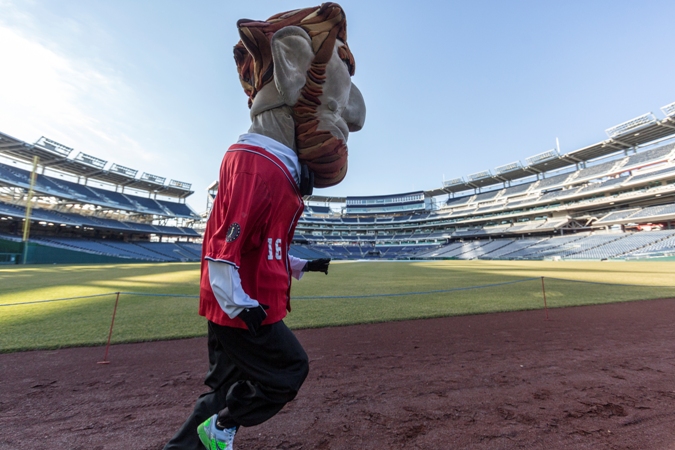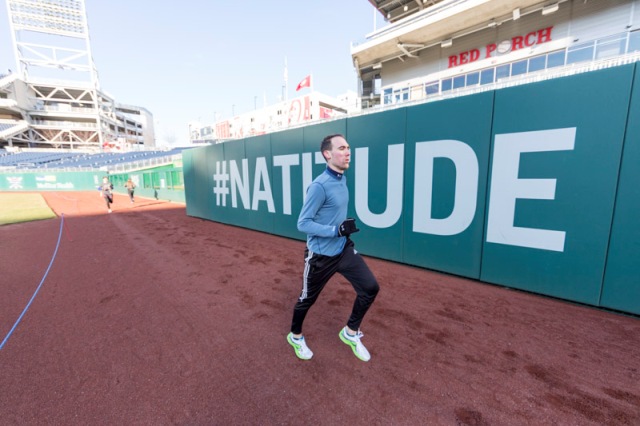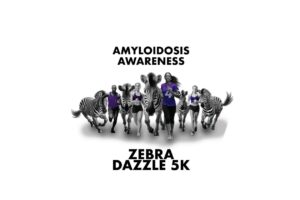A month before pitchers and catchers reported, the true stars of Washington Nationals games showed up at the stadium.
Most of them, 38 total, arrived before 8 a.m. on a 20-degree Saturday in January. People in the group ranged from early 20s to mid 60s, and we all stood in the cold, ready to see if they had what it took.
Doors closed at 8:25, no exceptions. Don’t talk in costume. Don’t give your last name in media interviews. No photography while the costumes were partially on.
This wasn’t so much an exercise in building character as it was an exercise in a character.
At every Nationals home game, the commanders in chief dash around the outfield during the fourth inning. Even in down years for the team, the Mount Rushmore-quartet of George Washington, Theodore Roosevelt, Thomas Jefferson, and Abraham Lincoln bring a high point to the games. After 2012’s success, William Howard Taft took his place on the starting line.
To make it this far, candidates had to clear the two-part process of an application followed by five open-ended questions. Then, after an on-the-field tryout, each person sat for a panel interview.
First, you had to prove you could move.

Everyone at the tryouts had to run a 40-yard dash and two full circuits of the race course, from center field to first base and back.
Abe, George and Teddy were on deck for the day. Being from Illinois and having grown into a lanky frame, I wanted to embody the best the Midwest has given this country — our 16th president.
Just like you and I, the presidents put on their pants one leg at a time. Abe’s black slacks are held up with something close to mesh suspenders, but the pants don’t make the politician. The bulk of each of the costumes rests in the 45-pound head. Small metal pipes form an exoskeleton to which the head attaches, and weight is distributed down through the contraption.
An assistant held the head while I slipped my arms through shoulder straps and locked three buckles across my chest, similar to what we all did with our middle school backpacks, except these straps provided necessary support.
The all-important Nats jersey tied the costume together and hid the guts and the secrets of the Presidents that participants in the open tryouts got to see. But the insider’s view has to stay that way once a normal human transforms into a living caricature of our nation’s former leaders.
“Do you know who Mickey Mouse is?” asked Tom Davis, senior manager for entertainment. “It’s important to keep that magic of the whole persona. It’s important to be able to become that character.”
“If I hired John Doe to be a President, I don’t expect to see John Doe playing the part of Abe. I expect to see Abe. It really is every facet. All the Presidents have their own personalities. Abe is that guy out there that he is a relentless winner. He likes to win races. When you see Abe out there racing, you want to see the Abe that everybody else saw the 10 games before.”
Yet any character traits flow from a basic ability to handle the heavy costume. I trained six days a week with runs, swims, spin classes and weight lifting, so even with no mascot experience, I was confident I could handle a few strides in the ballpark.
“The biggest thing is getting over the mindset that you need to be a long-distance runner or a college track champion,” Davis said. “That’s not really what you need to do to be a great President.”
After the initial 200-yard scamper around the warning track, I stood near first base sucking wind as if I’d just run stadium steps all morning. I would have needed to regularly tote a five-gallon CamelBak above my head on my runs through the city to have any advantage. Plus, those straps that kept me in character also transformed routine oxygen intake into an ordeal that required concerted energy.
Still, the more important task was to focus on where I was headed — really, where my head was headed. Every movement in character demanded a full-body commitment, especially a turn.
“As soon as you take that turn, your head wants to go one way, but your feet are trying to go another way, and there’s the wall getting closer,” said Artie, one of the participants trying out for the first time. He played baseball in high school and briefly in college, and similar to many of the participants, he’d quickly internalized the idea of adopting a personality that could serve the larger team.
“I was here for all the post-season games in 2012. The electricity was amazing. I couldn’t imagine being on the field with everyone cheering for you, or the President you are. I know there’s people in there. I wasn’t ignorant to that in the past, but they’re still Presidents to me. I’m still calling them by Teddy, Abe, Taft, Tom.”
***
Despite any mental cohesion with a character, the physical reality of limited vision hampered everyone. You can see more from inside a football helmet than you can from one of the presidents’ heads. I peered out from a tiny mesh porthole near Abe’s bow tie. My forehead wound up with a few minor abrasions because I needed to brace against the costume’s swaying.
Falling didn’t appeal to me, so before the tryouts, I had thought about how the body of a president costume would affect my motion.
My legs were fine; what changed was my center of gravity, that point that we all had to recalibrate in our awkward teenage years. Even the cool kids had to do this; they just managed it faster.
You want to be a cool kid inside Nationals Stadium.
A person’s center of gravity means a lot, physically. It dictates how we walk and how we run. Identical to their real-world counterparts, Racing Presidents depend on an even keel, not haste. Balance and stabilization precede speed, so once you find your center and learn how to move with it, you’re winning races.
“A small step can sway you,” said Marissa, one of four women who tried out. “A tiny bit to the right really is a big step to the right. The littlest thing makes a big difference. You have to be more in tune with the weight that you’re carrying.”
In other words, Racing Presidents win from the core, not from the legs.
Previous experience is not a deciding factor in the tryouts and the Nationals hire a variable number of qualified applicants each year. Marissa had a few prior mascot experiences, including her time as Bruce the Aluminum Can, a character who promoted a recycling program in grade schools near her college. Marissa’s work friends told her about the presidents opportunity.
“They know about my unbridled enthusiasm for mascots,” she said. “If all else fails, I made it to Nats Stadium. I put on the costume. I ran for president. That’s a resume thing. Ran for president: one day.”

I cruised through the 40-yard dash in 8.59 seconds. Short strides and quick arm swings meant victory. Like my chosen leader, I won my presidential races too, and in doing so, carried on a tradition.
Abe, missing his signature stovepipe hat, leads the all-time season standings with 239 wins, beating George at 178.
Artie, Marissa and I all stayed upright for the duration of our campaigns, but not everyone did. The stumbles and tumbles provided the best entertainment on the field. If life is about falls and how you rise after them, you don’t want to spend time wobbling around as a professional mascot.
A character’s body would cave from the waist up as the forehead of one of the venerated forefathers cruised from the air into the warning track dirt. The collapse typically involved windmill arms, but once the head sank past the tipping point, the only variable left was how funny the scene would look as the President hit the surface.
Sometimes, it was a slide. Other times, the former leader of the free world bounced to a stop.
Just watching someone try to lift from the ground felt arduous. Imagine a few sacks of potatoes suspended three feet above your head, and picture your attempt to stand on two feet after looking at a vertical horizon.
Regardless of slips or speed, though, the transition in and out of characters took place behind the center-field wall.
Following a time in costume, it’s easy to more fully appreciate the axiom about a weight off the shoulders. Several people, including me, completed a hop-skip with a few arm rotations. That signaled an adjustment back to a familiar sense of self, much closer to the ground, because, for a little while, we were larger than life.
When I decided to write about what it was like to be a Running President, the Nationals made me choose whether I be at the tryouts as a reporter or an applicant–or candidate. But I couldn’t help but wonder what I would do if offered the job.
After all, being the president is a lot of responsibility, no matter which era you’re in.
Recent Stories
Looking for our race calendar? Click here Submit races here or shop local for running gear
Zebra Dazzle 5k Walk/Run or 100 Bike over 30 Days
Join the Zebras for this Zebra Dazzle event for all fitness levels. The 5k Walk/Run has 2 options. You can participate as an onsite participant on 9/13 at Carter Barron in Rock Creek Park, NW Washington DC or as a
Hero Dogs 5K9
Hero Dogs Inc will host its 5th Annual 5K9 race at the Congressional Cemetery on Saturday, May 17th, beginning at 8 am. There will also be a 1K Fun Run. The 1K Fun Run will start at 8 am sharp






